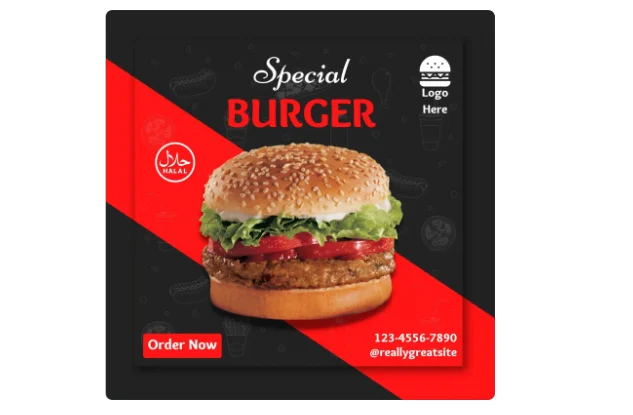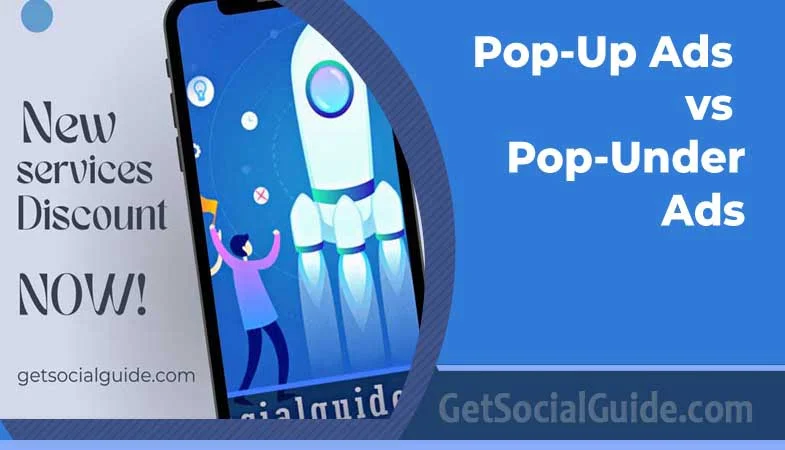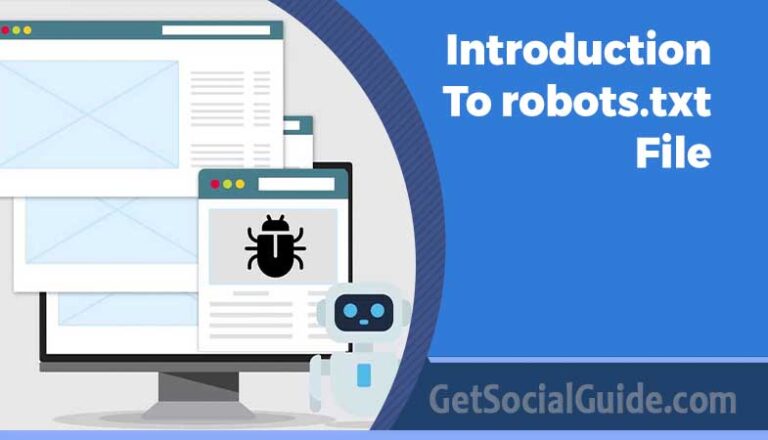Pop-Up Ads vs. Pop-Under Ads: Understanding the Difference
Pop-up ads and pop-under ads are two common types of online advertisements that appear on websites. Both are designed to grab users’ attention and promote products or services, but they differ in how they are presented to the audience. In this article, we’ll explore the dissimilarities between pop-up ads and pop-under ads to help you understand their impact on user experience and advertising effectiveness.
Example of a popunder, popup, and interstitial ad
Pop-Up Ads

Pop-up ads are intrusive online advertisements that unexpectedly appear on top of a website’s content while you are browsing. These advertisements are notorious for their disruptive nature, as they tend to obstruct the view of the original content, making it difficult for users to access the information they intended to see. Oftentimes, these ads occupy a considerable portion of the screen, which can be frustrating and inconvenient for users trying to navigate the website.
The design of pop-up ads usually involves placing them prominently in the center of the page or in one of the corners, making them hard to miss. They are strategically positioned to grab the viewer’s attention and compel them to take action, whether it’s clicking on the ad or engaging with its content.
The content displayed in pop-up ads varies widely, ranging from promotional offers, product advertisements, newsletter subscriptions, surveys, and more. While some pop-ups may provide relevant content or offers that interest the user, many others are considered annoying and irrelevant, contributing to a negative user experience.
To address the frustration caused by pop-up ads, many web browsers and website developers have implemented measures to control or block them. Browser settings, add-ons, or extensions can be utilized to prevent pop-ups from appearing, providing users with a smoother browsing experience and allowing them to access content without constant interruptions.
Furthermore, webmasters and marketers are becoming increasingly mindful of user experience, opting for less intrusive ad formats such as banner ads, native ads, or contextual advertising, which blend more seamlessly with the website’s content and are less disruptive to the user’s browsing journey.
In conclusion, while pop-up ads have been a widely used marketing tool, they have garnered a reputation for being intrusive and frustrating to users. As the online advertising landscape evolves, it’s essential to strike a balance between advertising and user experience, ensuring that ads do not hinder the accessibility of valuable content and respecting users’ browsing preferences.
Advantages of Pop-Up Ads:
- Attention-Grabbing: Pop-up ads are hard to ignore, as they demand immediate attention by appearing abruptly on the screen.
- Higher Visibility: Since they are displayed above the main content, pop-ups are more visible to users compared to other ad formats.
- Effective for Call-to-Action (CTA): Pop-ups can be used to prompt users to take specific actions, such as signing up for a newsletter or subscribing to a service.
Disadvantages of Pop-Up Ads:
- Intrusive: Pop-up ads can interrupt the user’s browsing experience, leading to annoyance and frustration.
- Negative Perception: Many users consider pop-ups as intrusive and may develop a negative perception of the website or brand associated with them.
- Ad Blockers: Due to the prevalence of pop-up ads, many users have installed ad blockers to avoid them altogether, reducing the ad’s effectiveness.
Pop-Under Ads

Pop-under ads are a variation of pop-up ads with a distinct characteristic that sets them apart. Similar to pop-ups, pop-under ads are also online advertisements that appear unexpectedly while you’re browsing a website. However, the key difference lies in their display behavior.
When a user clicks on a website that contains a pop-under ad, the ad does not appear immediately on top of the content like a traditional pop-up. Instead, the pop-under ad opens in a new browser tab or window, hidden behind the main browser window that the user is actively using. This means that the user is usually unaware of the pop-under ad’s presence until they either close or minimize their main browsing window, revealing the ad that was hidden beneath.
The delayed appearance of pop-under ads can be seen as an attempt to be less intrusive compared to regular pop-ups. Since they don’t disrupt the user’s immediate browsing experience, some advertisers and marketers believe that pop-under ads might be perceived as less bothersome. However, this approach is still contentious, as some users might find the unexpected appearance of ads, even if they are not immediately visible, to be annoying and intrusive.
Pop-under ads are often utilized for various advertising purposes, including promoting products, services, special offers, or even generating leads and sign-ups for newsletters or mailing lists. Advertisers hope that by displaying the ad behind the main window, users may eventually notice and interact with it after they finish their browsing session on the original website.
Just like pop-up ads, pop-under ads have faced criticism for their potential to disrupt user experience and distract users from their intended online activities. Consequently, many web browsers and ad-blocking tools include options to block or control the display of pop-under ads, empowering users to manage their browsing experience and avoid such intrusive advertising practices.
As the online advertising landscape continues to evolve, advertisers and website developers are constantly seeking a balance between effective marketing strategies and providing a positive user experience. The goal is to ensure that advertising efforts remain impactful while respecting users’ preferences and avoiding undue interruptions during their online journeys.
How POP-under ad work?
A popunder ad is an advertising format that opens a new browser window or tab behind the current page that a user is viewing. Unlike pop-up ads, which appear in front of the active window and can be more intrusive, popunders open discreetly in the background, allowing the user to continue their browsing experience uninterrupted.
Here’s how a popunder ad typically works:
- User Interaction: The user visits a website that contains a popunder ad or clicks on a link within the site. The popunder can be triggered by various actions, such as clicking on a specific link, staying on the page for a certain duration, or attempting to exit the site.
- New Window or Tab: When the triggering action occurs, a new browser window or tab is opened behind the current active window. The popunder ad loads in this newly opened window.
- Ad Display: The popunder ad is now visible to the user, though it was not immediately noticeable when it opened. The ad can be a static image, an animated graphic, a video, or even a full landing page.
- User Interaction (continued): The user might notice the popunder ad either after closing the original site or switching tabs. They can choose to engage with the ad by interacting with its content or ignore it entirely.
- Advertiser’s Goal: The advertiser’s objective with the popunder ad is to attract the user’s attention, promote their product or service, and potentially drive traffic to their website or landing page.
Popunder ads are popular in online advertising because they offer a way to reach users without interrupting their browsing experience. Advertisers often target specific geographic regions or demographics to make the ads more relevant to their intended audience. These ads are commonly used for various verticals, as mentioned earlier, due to their potential effectiveness and higher click-through rates compared to other display ad formats like banners.
It is important to note that some users might find popunder ads intrusive or annoying, leading to the use of ad blockers to prevent such ads from appearing. As a result, some advertisers and publishers need to consider the balance between ad visibility and user experience to ensure the effectiveness of popunder ad campaigns.
Examples of Pop-Under Networks Sites
The list you provided consists of various ad networks and platforms that offer popunder advertising services. These networks facilitate the distribution of popunder ads for advertisers and help publishers monetize their websites through these ad formats. Here’s a brief overview of each:
- Zoomd: Zoomd is a platform that enables advertisers to reach their target audience effectively and helps publishers monetize their traffic. They offer various ad formats, including popunder ads, to engage users and drive conversions.
- AdMaven: AdMaven is an ad network that caters to both publishers and advertisers. They provide popunder ads as one of their ad formats, allowing advertisers to promote their products or services and publishers to generate revenue from their website traffic.
- Adsterra Network: Adsterra is a well-known mobile ad and CPA (Cost Per Action) network. In addition to various ad formats, they offer popunder ads to help advertisers achieve their campaign objectives and assist publishers in maximizing their earnings.
- EXADS: EXADS specializes in white-label ad serving technology, providing solutions for advertisers and publishers. They offer popunder ads as part of their advertising services to engage audiences and drive results.
- AdsCompass: AdsCompass is a global ad network that serves both publishers and advertisers. They offer popunder ads, among other formats, to connect advertisers with their target audience and help publishers monetize their traffic effectively.
- HilltopAds: HilltopAds is known as one of the best CPM (Cost Per Mille) ad networks, serving publishers and advertisers worldwide. They provide popunder ads to advertisers looking for increased visibility and publishers seeking higher revenue.
- PropellerAds: PropellerAds is a multisource advertising platform that covers a wide range of geographic regions with billions of advertising impressions daily. They offer popunder ads as part of their extensive ad format options.
- Adlane: Adlane is an ad network focused on serving publishers and website owners. They provide popunder ads as one of their offerings to help advertisers promote their products and enable publishers to monetize their web traffic.
- Kevel: Kevel provides tools to build custom ad servers quickly. They help businesses, including ad networks, incorporate popunder ads and other ad formats tailored to their specific requirements.
It’s worth noting that the effectiveness of popunder ads can vary depending on factors like the target audience, the offer being promoted, and the quality of the ad network’s inventory. Advertisers and publishers should carefully choose the platforms that align with their objectives and cater to their target audience to achieve the best results from their popunder ad campaigns.
Advantages of Pop-Under Ads:
- Non-Intrusive Initial Experience: Pop-under ads don’t disrupt the user’s immediate browsing experience since they are hidden behind the main window.
- Extended Exposure: Users may notice the pop-under ad when they close their main browser window, leading to extended exposure.
- Less Likely to be Blocked: Pop-under ads are less likely to be blocked by ad blockers, allowing them to reach a broader audience.
Disadvantages of Pop-Under Ads:
- Delayed Visibility: The delayed appearance of pop-under ads might result in lower initial engagement compared to pop-ups.
- Lower Click-Through Rates: Pop-under ads may have lower click-through rates since they are not as immediately noticeable as pop-ups.
- Potential Dismissal: Some users may close the pop-under ad without viewing its content if they are not interested.
Conclusion
In summary, pop-up ads and pop-under ads are two different approaches to online advertising, each with its own advantages and disadvantages. Pop-ups are attention-grabbing but can be intrusive, while pop-unders offer a less disruptive initial experience but may have lower initial engagement. The choice between these ad formats depends on the advertising goals, target audience, and the website’s overall user experience. Striking the right balance is essential to ensure effective advertising while maintaining a positive user experience.



